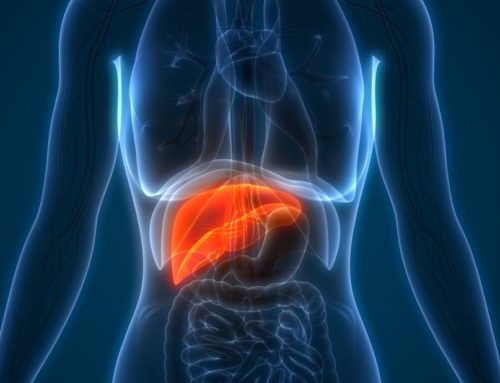Why is postpartum birth control recommended?
If you are not using a birth control method, it is possible to become pregnant very soon after having a baby. Using a birth control method in the weeks after you have a baby (the postpartum period) helps you avoid an unintended pregnancy.
How do I choose a postpartum birth control method?
When choosing a birth control method to use after you have a baby, think about the following:
Timing—Some birth control methods can be started right after childbirth. With other methods, you need to wait a few weeks to start.
Breastfeeding—All methods are safe to use while breastfeeding. However, there are a few methods that are not recom-mended during the first weeks of breastfeeding because there is a very small risk that they can affect your milk supply.
Effectiveness—The method you used before pregnancy may not be the best choice to use after pregnancy. For example, the sponge and cervical cap are much less effective in women who have given birth.
What is an intrauterine device (IUD)?
The IUD is a small, T-shaped device that your obstetrician–gynecologist (ob-gyn) or other health care professional inserts into your uterus. IUDs usually can be inserted right after a vaginal or cesarean delivery or at your first postpartum health care visit. The hormonal IUD releases a small amount of progestin into the uterus and is effective for up to 3 years or 5 years, depending on the kind you get. The copper IUD releases a small amount of copper into the uterus and is effective for up to 10 years. Both work mainly by stopping the egg and sperm from joining (fertilization).
What are the benefits of an IUD?
IUDs do not interfere with sex or daily activities. Once inserted, you do not have to do anything else to prevent pregnancy. The hormonal IUD may decrease menstrual pain and heavy menstrual bleeding.
What are the possible risks and side effects of an IUD?
The IUD may come out of the uterus. This happens in about 5% of users in the first year of using the IUD. Serious complications from using an IUD, such as infection or injury, are rare. The hormonal IUD may cause spotting and irregular bleeding in the first 3–6 months of use. Other side effects include headaches, nausea, depression, and breast tenderness.
The copper IUD may increase menstrual pain and bleeding or cause bleeding between periods, mainly in the first few months of use. This usually decreases within 1 year of use.
What is a birth control implant?
The birth control implant is a single flexible rod about the size of a matchstick that your ob-gyn or other health care professional inserts under the skin in your upper arm. You can have the implant inserted immediately after a vaginal or cesarean delivery. It releases progestin into the body and works for up to 3 years.
What are the benefits of an implant?
The implant does not interfere with sex or daily activities. Once it is inserted, you do not have to do anything else to prevent pregnancy. Almost all women are able to use the implant.
What are the possible risks and side effects of an implant?
The implant may cause unpredictable bleeding. Your periods may be heavier, lighter, or longer. Some users experience infrequent periods or bleeding in between periods. Other common side effects include mood changes, headaches, acne, and depression.
What is a birth control injection?
The birth control injection contains a type of progestin called depot medroxyprogesterone acetate (DMPA). It works by preventing ovulation. Your ob-gyn or other health care professional will give you a shot of DMPA in your arm or buttock every 3 months. You can get your first shot right after a vaginal or cesarean delivery.
What are the benefits of an injection?
An injection does not interfere with sex. Almost all women are able to use the injection.
What are the possible risks and side effects of an injection?
Bone loss may occur with use of the injection. When injections are stopped, some, if not all, of the bone that was lost is gained back.
An injection should not be used if you have multiple risk factors for cardiovascular disease.
An injection may cause irregular bleeding, headaches, or slight weight gain.
What are combined hormonal methods?
Birth control pills, the vaginal ring, and the patch are birth control methods that contain estrogen and progestin. They work mainly by preventing ovulation. Depending on the method, you need to remember to do one of the following: take a pill each day, insert a vaginal ring every 21 days, or apply a skin patch every week for 3 weeks.
What are the benefits of combined hormonal methods?
These methods do not interfere with sex. They may make your period more regular, lighter, and shorter. These methods may also reduce cramps, improve acne, reduce menstrual migraine frequency, and reduce unwanted hair growth.
What are the possible risks and side effects of combined hormonal methods?
During the postpartum period, women have a higher risk of developing blood clots in veins located deep in the body. This condition is called deep vein thrombosis (DVT). Combined hormonal methods increase the risk of DVT even further. If you have no additional risk factors for DVT, you can start using these methods 3 weeks after childbirth.
There is a very small risk that the estrogen in these methods can affect your milk supply if you are breastfeeding. You should avoid these methods for the first 4–6 weeks after childbirth, until breastfeeding is established.
Combined hormonal methods have been linked to a small risk of stroke and heart attacks. They are not recommended if you are older than 35 years and smoke; have high blood pressure or a history of stroke, heart attack, or DVT; have a history of migraine headaches with aura; have certain medical conditions; or have breast cancer or a history of breast cancer.
Side effects may include breakthrough bleeding, headaches, breast tenderness, and nausea.
What is the progestin-only pill?
Progestin-only birth control pills contain just progestin. They work mainly by preventing fertilization of the egg by the sperm. They must be taken at the exact same time each day. If you miss a pill by more than 3 hours, you will need to use a back-up method for the next 48 hours.
What are the benefits of the progestin-only pill?
Progestin-only pills do not interfere with sex. They may reduce menstrual bleeding or stop your period altogether.
What are the possible risks and side effects of the progestin-only pill?
Side effects include headaches, nausea, and breast tenderness. Progestin-only pills should not be used if you have breast cancer or a history of breast cancer. They are not recommended if you have certain medical conditions.
What is the barrier method?
Barrier methods include spermicide, male and female condoms, the diaphragm, the cervical cap, and the sponge. Barrier methods work by preventing the man’s sperm from reaching the woman’s egg. The cervical cap, diaphragm, and sponge can be used starting 6 weeks after childbirth, when the uterus and cervix have returned to normal size. If you used a diaphragm or cervical cap before childbirth, you should be refitted after childbirth.
What are the benefits of the barrier method?
Condoms are the only birth control method that protect against sexually transmitted infections (STIs). Condoms, spermicide, and the sponge can be bought over the counter. Barrier methods have no effect on a woman’s natural hormones.
What are the possible risks and side effects of the barrier method?
Spermicides can cause vaginal burning and irritation. Some people are allergic to spermicide and may have a reaction. Frequent use of spermicides (such as every day) can increase the risk of getting human immunodeficiency virus (HIV) from an infected partner.
What is the lactational amenorrhea method (LAM)?
Lactational amenorrhea method (LAM) is a temporary method of birth control based on the natural way the body prevents ovulation when a woman is breastfeeding. It requires exclusive, frequent breastfeeding. The time between feedings should not be longer than 4 hours during the day or 6 hours at night. LAM may not be practical for many women.
What are the benefits of LAM?
It is a natural form of birth control. It does not cost anything.
What are the possible risks and side effects of LAM?
There are no health risks or side effects to using LAM. This method can be used for only 6 months after childbirth or until your period returns. It is unclear whether pumping breast milk decreases the effectiveness of LAM.
What is sterilization?
Sterilization is permanent birth control. In women, sterilization is performed by closing off or removing the fallopian tubes. It can be performed soon after delivery while you are still in the hospital, several weeks after you have your baby, or several months after childbirth. For men, vasectomy is an option. It takes about 2–4 months for the semen to become totally free of sperm after a vasectomy. A couple must use another method of birth control or avoid sexual intercourse until a sperm count confirms that no sperm are present.
What are the benefits of sterilization?
Sterilization is permanent. Once you have it done, you do not need to use any other birth control method.
What are the possible risks and side effects of sterilization?
There is a small risk of infection and bleeding with female and male sterilization. You should be sure that you no longer want to become pregnant again in the future. If you change your mind later, attempts to reverse it are not guaranteed to work.





